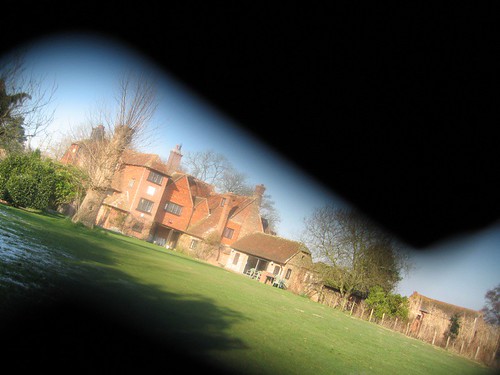
image by Flckr user nick farnhill
Hey accidents happen. I’m a camera repair technician and I see people’s mistakes every day I come to work, that’s my job. “Point and Shoot†(P&S) cameras get it the worst because pretty much everyone owns one and they can come everywhere with you. It doesn’t matter which camera you have or how careful you think you are, accidents happen. However, there are a lot of breaks that could have been avoided had the operator stopped and asked himself or herself one question… Is this a bad idea? I should be clear, when I say “bad idea†I’m referring to the kinds of behaviors that are admittedly easy to overlook. Let’s look at the most commonly broken components of P&S cameras and the common ways in which they break.
Anything that sticks out on a camera is more likely of becoming damaged. So the lens is definitely not the strongest point on a camera. In your lifetime the dreaded lens error will afflict you or someone close to you. Commonly this occurs when the camera is turned on and the telescoping lens has nowhere to go, in a pocket or purse for instance. This is easily avoided by taking out the battery (I realize this is a bit of a hassle but is one more good reason to own and USE a case). The lens barrier (the thingy that opens and closes in front of your lens – see post image) is another piece that frequently gets damaged. On some models it can even produces a lens error. The trick here is to not mess with it and try to keep things from dragging across it.
The battery door is a necessary evil. In the last century we have gone to the moon but there is still no new innovation on the battery door. Hinges are great but are also weak; even the best battery doors are easily broken. Many cameras also have a little spring-loaded tab that holds the battery into place. This has both pluses and minuses but is something that breaks often. In this particular case there aren’t really any habits to prevent damage to these components other than to try and limit use and be particularly careful. An issue you can prevent has to do with the battery and the contacts inside the chamber. For some reason there are cameras designed with a battery that allows you to put the battery in the wrong way (not talking about AAs). Putting it in wrong can bend the contacts out of place and when the battery is put back in the right way the connectivity can be poor or nonexistent.
The last of the most common breaks to P&S cameras is actually very common to all types of digital cameras. The LCD is particularly vulnerable and with them getting bigger and bigger they just stick out like a sore thumb. Speaking of thumbs, so often I see LCDs with an inky spot where it broke that happens to be the same size and shape of the users thumb, coincidence? It takes surprisingly little pressure to break them and that is why I recommend getting a screen protector. The USB and Memory Card Slot are notorious for damage. Professionals WEAR them out from heavy use and in the case of Compact Flash a card CAN bend pins. However, there’s no way of skirting around this one, when these get damaged it is from someone trying to force something the wrong way.
Conclusion? Well, the absolute WORST PLACE to carry your camera is in your back pants pocket. Ironically one of the worst places to carry “pocket sized†cameras is in your pocket. Now that you know the weak points of your camera hopefully you will be just a little more mindful of them the next time you pull it out.
{ 1 comment… read it below or add one }
Hello – I’m glad I found this site. You’re absolutely right, there seems no P+S cam with a solid battery door. I had some Cameras – the little plastic parts broke – camera useless. Seems like a modern camera should not live long. Now I use a Rollei sportsline90 , this mechanism looks very solid. I don’t use it underwater – but this kind of camera is strong enough for my every day use. Sad but true. Regards, Michael / Germany